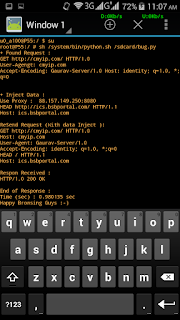


The window that you see when you open the Command Prompt is the displaying process. One process is what performs the commands, and the other is a process to send your input and display the output. However, when you run these programs from the Start menu, two processes are running. Opening them this way may make you think that they’re self-contained programs. If you’ve always used Windows, then you may be used to using the Command Prompt and PowerShell through their own apps. Once you have all the updates installed, then you’re ready to do the initial setup for the command line environment in your Windows Python coding setup. However, if you wait a while and then check for updates again, it’ll likely find some more to install.
Python windows terminal emulator update#
Once the first batch of updates have been installed and you’ve rebooted, if you go back to the update screen, then it’ll probably say that the system is up-to-date. You’ll probably have to repeat the update process two or three times. Once all the updates have been installed, you’ll probably be prompted to reboot the computer.
Python windows terminal emulator install#
Once there, prompt Windows to search for, download, and install any updates it can find: To start the update process, go to the Start menu and search for Windows Update. So if you’re starting here, line up some other tasks while waiting for the updates to complete. Installing Windows updates can take an hour or two, but it’s relatively mindless. It’s also a safeguard against the dreaded Windows auto-reboot. Updating is especially relevant if you want to use Windows Subsystem for Linux (WSL) and have Windows 10. Remove ads Updating Your Windows Installationįirst, if your machine is new or you’ve disabled updates, then you’ll want to make sure your Windows installation is up-to-date.


 0 kommentar(er)
0 kommentar(er)
